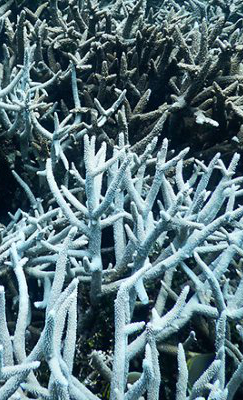Divers find bleaching runs deep
 New research suggests the 2016 coral bleaching on the Great Barrier Reef also affected deep reefs.
New research suggests the 2016 coral bleaching on the Great Barrier Reef also affected deep reefs.
Deep reefs are often considered a refuge from thermal anomalies caused by global ocean warming, but the research highlights limitations to this role and argues that both shallow and deep reefs are under threat of mass bleaching events.
The experts say their findings emphasise the unfortunate vulnerability of the Great Barrier Reef.
“The study details how the impacts of this bleaching did lessen over depth, but were still substantial even on the deep reef,” Professor Hoegh-Guldberg said.
“We already established that the refuge role of deep reefs is generally restricted by the limited overlap in species with the shallow reef.
“However, this adds an extra limitation by demonstrating that the deep reefs themselves are also impacted by higher seawater temperatures.”
Researcher Dr Pedro Frade said the scientists were astounded to find bleached coral colonies all the way down to 40 metres.
“It was a shock to see that the impacts extended to these dimly-lit reefs, as we were hoping that their depth may have provided protection from this devastating event,” he said.
The Great Barrier Reef is known to harbor extensive areas of deep coral reefs, however given their depth these reefs are notoriously difficult to study.
Using remotely operated vehicles, the team deployed sensors down to 100 metres to characterise how temperature conditions at depth differ from those in the shallow reef.








 Print
Print